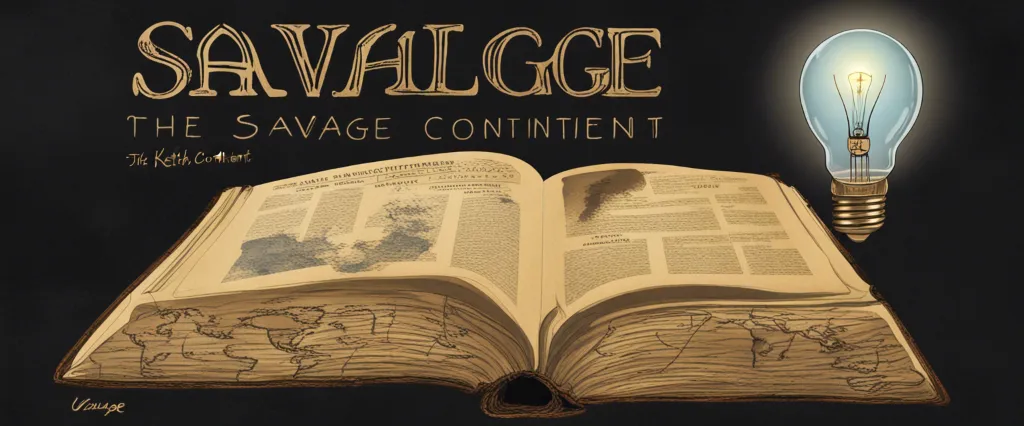“Savage Continent” by Keith Lowe is a meticulously researched and compelling account of the aftermath of World War II in Europe. The book explores the immediate post-war period from 1944 to 1949, examining the devastating consequences of the conflict on the continent and its people.
Lowe highlights the immense human suffering experienced by Europe’s population in the wake of the war. He analyzes the physical destruction of cities, towns, and villages caused by bombing campaigns, as well as the dislocation and displacement of millions of people due to territorial changes and population movements. The author delves into the appalling conditions faced by refugees, POWs, and concentration camp survivors, most of whom found themselves in desperate situations without access to basic necessities.
Moreover, Lowe delves into the psychological toll that World War II had on Europeans. The book meticulously documents the atrocities committed during the war, including ethnic cleansing, mass rape, and the brutal treatment of prisoners. It also examines the deep divisions and bitter resentments that lingered after the conflict, leading to further violence, revenge, and political upheaval.
While Lowe focuses primarily on Western and Central Europe, he also explores the impact of the war on Eastern Europe and the Soviet Union. He sheds light on the rise of totalitarian regimes and the imposition of Soviet control in Eastern Europe, which led to a new era of oppression and censorship for those regions.
Additionally, Lowe examines the initial attempts at reconstruction and the challenges faced by the Allied powers in rebuilding war-torn Europe. He explores the difficulties of establishing new governments, providing basic necessities, and jump-starting economies shattered by the conflict. The book also addresses the emergence of new ideologies and political movements that shaped Europe’s future, such as communism, fascism, and the early stages of the Cold War.
In summary, “Savage Continent” offers a comprehensive and harrowing account of post-World War II Europe. It vividly portrays the immense suffering, deep divisions, and unprecedented challenges faced by the continent and its people during this tumultuous period.
Hiroshima by John Hersey is a non-fiction book that tells the story of six survivors of the atomic bomb dropped on Hiroshima, Japan, on August 6, 1945, during World War II. The book focuses on the experiences of these individuals in the immediate aftermath of the bombing, their struggles to survive, and their attempts to rebuild their lives in the devastated city.
Hersey’s book follows the lives of these survivors – a doctor, a German Catholic priest, a widowed seamstress, a Methodist minister, a young female factory worker, and a young doctor – as they grapple with the physical, emotional, and psychological impact of the bombing. Hersey narrates their individual accounts in a chronological manner, depicting a day-by-day, hour-by-hour timeline of the bombing’s immediate effects and the subsequent days and weeks that followed.
Through the personal stories of these survivors, Hersey vividly portrays the horror and devastation caused by the atomic bomb. The book explores themes of human resilience, the fragility of life, and the profound impact of war on civilian populations. Hiroshima offers a poignant reminder of the catastrophic consequences of nuclear warfare and serves as a powerful testimony to the experiences of those caught in the carnage.
Overall, Hiroshima is a compelling and deeply moving account of the atomic bomb’s effects on the lives of ordinary people, and it stands as a testament to the importance of understanding the human cost of war.
Comparison between Two Books
Both “Savage Continent” by Keith Lowe and “Hiroshima” by John Hersey shed light on important historical events and their aftermaths.
One similarity between the two books is that they both focus on the traumatic experiences and long-lasting effects of World War II. While “Savage Continent” explores the immediate aftermath of the war in Europe, depicting the chaos, violence, and immense human suffering that continued even after the official end of the conflict, “Hiroshima” delves into the personal stories of six survivors of the atomic bombing of Hiroshima, detailing the physical and emotional impact on their lives.
Both books highlight the plight of ordinary people who were caught up in the horrors of war and its aftermath. “Savage Continent” emphasizes the atrocities committed by both the Nazis and the Soviet forces in Europe, while also delving into the experiences of those who became refugees, were displaced from their homes, and dealt with issues like starvation, violence, and brutal regime changes. Similarly, “Hiroshima” humanizes the victims of the atomic bomb, providing individual narratives that depict the horror, loss, and struggles faced by those who survived the devastating event.
Furthermore, both books aim to present a comprehensive understanding of the historical events they cover. “Savage Continent” offers a meticulous examination of the complex post-war period in Europe by drawing on a vast range of primary sources, from personal testimonies to official documents. Similarly, “Hiroshima” meticulously reconstructs the events leading up to the bombing and its immediate consequences by conducting extensive interviews with survivors and exploring the realities of their lives in the aftermath.
In conclusion, both “Savage Continent” and “Hiroshima” offer in-depth and empathetic accounts of the effects of World War II. They both depict the immense suffering experienced by ordinary people and shed light on the long-lasting impact of historical events on individuals and societies.
Savage Continent by Keith Lowe and Hiroshima by John Hersey are both important works of historical non-fiction that delve into significant events from World War II. Despite sharing a broad focus on this time period, the books diverge in their historic spotlight, presenting different perspectives and emphasizing distinct elements of the war.
Savage Continent provides a comprehensive analysis of Europe’s immediate post-war period, examining the chaotic and violent aftermath that ensued. Keith Lowe delves into lesser-known aspects of World War II, such as the mass displacement of populations, ethnic cleansing, and the collapse of political, social, and economic systems. By shining a light on the untold stories of suffering, revenge, and hardships faced by ordinary people, Lowe paints a grim picture of a continent engulfed in destruction and disorder.
On the other hand, Hiroshima narrows its scope to a singular event – the dropping of the atomic bomb on the city of Hiroshima. John Hersey meticulously reconstructs the experiences of six survivors, providing a humanistic account of the immediate and long-term effects of the bombing. Hersey’s focus lies in highlighting the personal journeys, resilience, and the emotional and physical suffering of individuals affected by this catastrophic event. By doing so, he elicits strong empathy from readers and ignites discussions around the ethical implications of nuclear warfare.
In terms of divergence, the historic spotlight in Savage Continent encompasses a broader geographical area – predominantly Europe – while Hiroshima concentrates on one specific city in Japan. Lowe’s book looks at the plight of multiple nations and societies as they grapple with the challenges of rebuilding in the aftermath of the war. In contrast, Hersey’s account mainly centers on the experiences of the Japanese people, providing an intimate and microcosmic perspective of the bomb’s impact.
The emphasis on different facets of World War II is another significant divergence. Savage Continent depicts a Europe torn apart by acts of revenge and the rising tide of nationalism, shedding light on the tumultuous period that followed the Nazis’ defeat. On the other hand, Hiroshima exposes the horrors and unprecedented consequences of atomic warfare, catalyzing discussions surrounding the use of such devastating weapons.
In conclusion, while Savage Continent and Hiroshima both explore the aftermath of World War II, they have different historic spotlights. Savage Continent offers a broader examination of post-war Europe, touching upon various aspects of the continent’s recovery, while Hiroshima concentrates on the personal stories of survivors and the aftermath of the atomic bombing. Both books provide unique insights into this tumultuous era, each contributing to our understanding of the complexities and tragedies of World War II.




